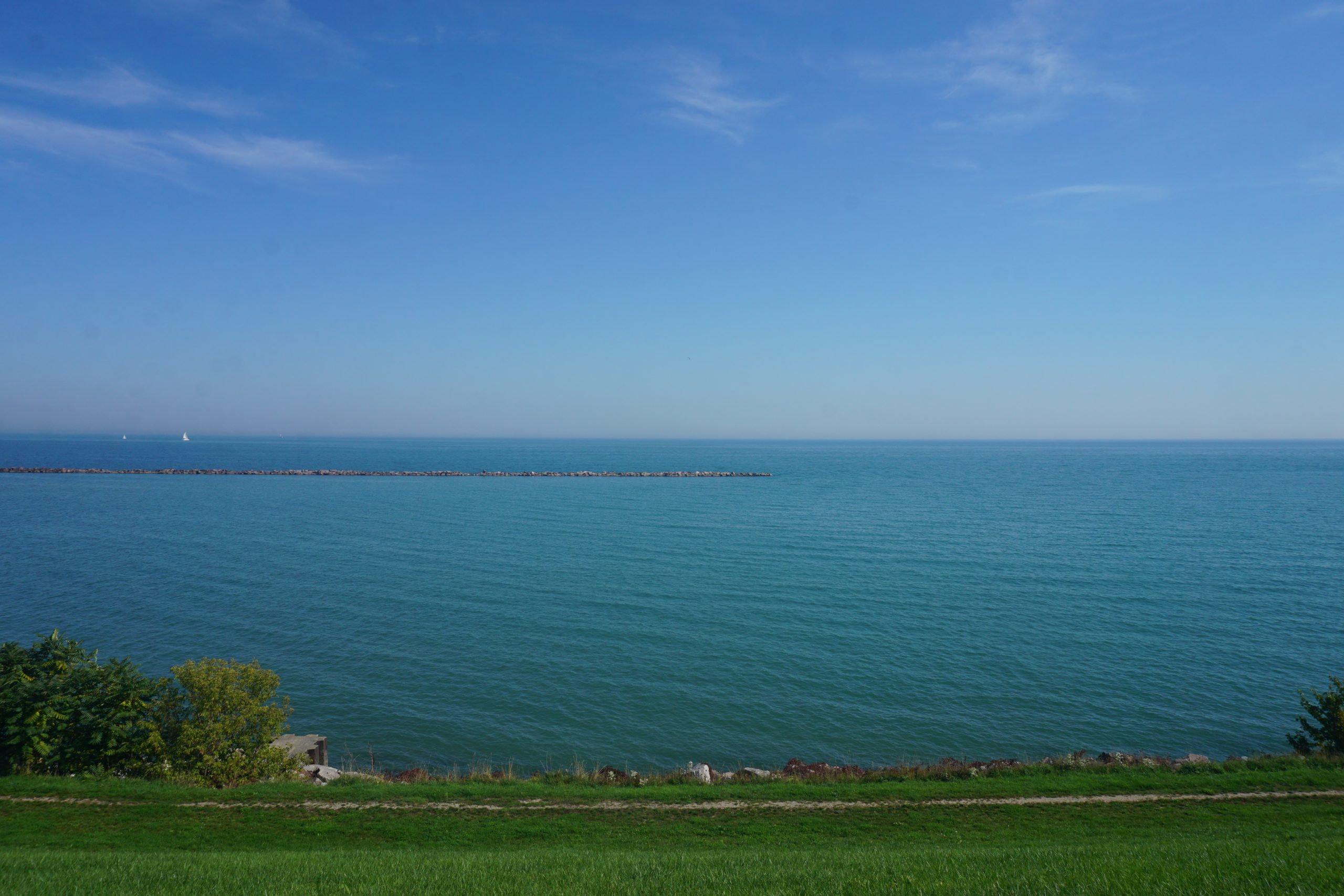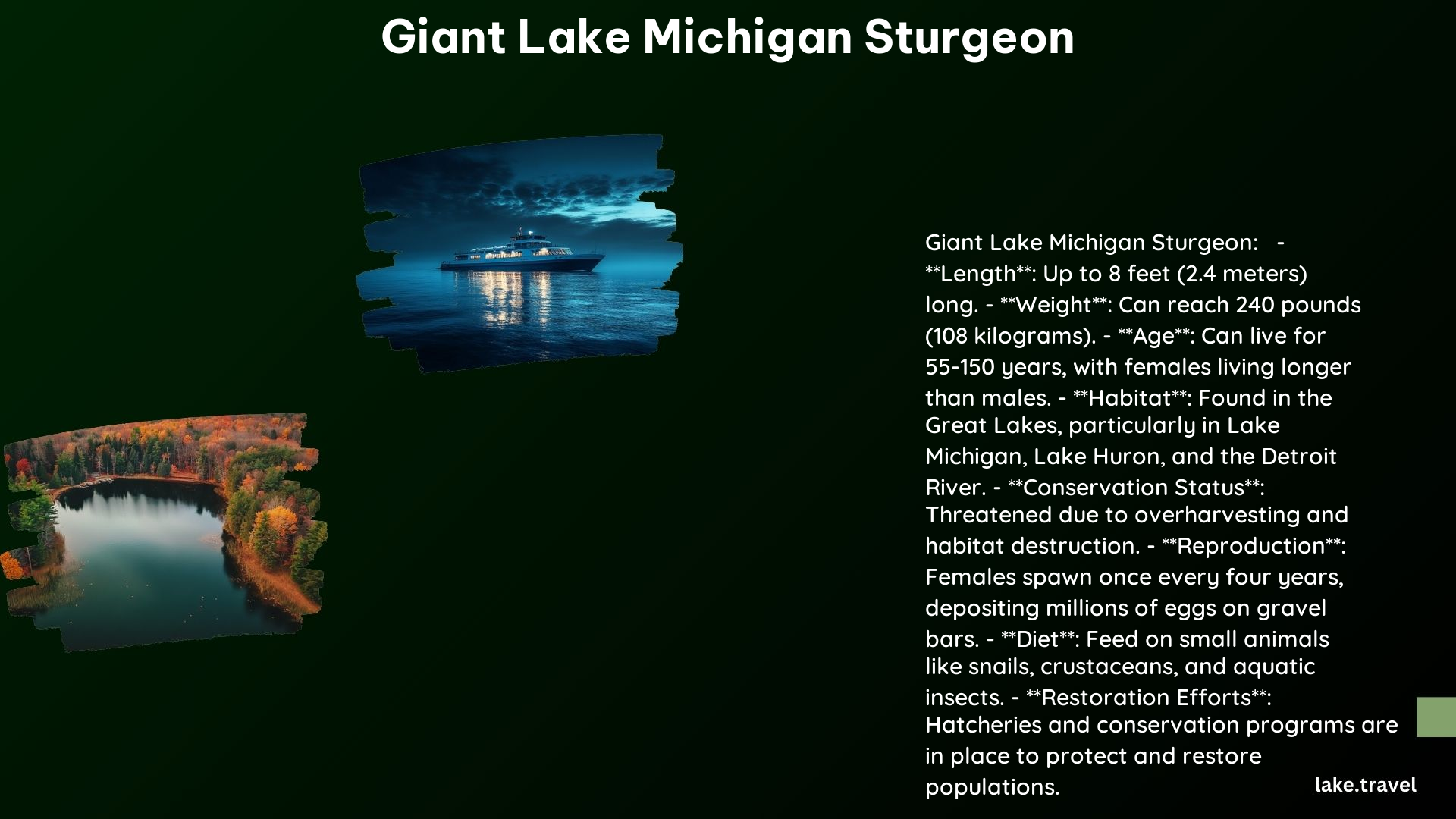Giant Lake Michigan Sturgeon are an ancient and fascinating species that have captured the attention of nature enthusiasts and conservationists alike. These massive, prehistoric-looking fish are a true wonder of the Great Lakes ecosystem, with a rich history and unique characteristics that make them a must-see for any lakes touring enthusiast.
Scientific Name and Description

The scientific name for the Giant Lake Michigan Sturgeon is Acipenser fulvescens, and they are a type of freshwater fish characterized by their elongated, spade-like snout, partly cartilaginous skeleton, and rows of bony plates on their sides and back. These bottom-feeding fish can grow up to an impressive 7.25 feet in length and weigh up to 240 pounds, making them one of the largest freshwater fish in North America.
Habitat and Diet

Giant Lake Michigan Sturgeon primarily inhabit the nearshore areas of Lake Michigan, where the water depth ranges from 15 to 30 feet. They are found in both rivers and lakes, where they feed on a variety of small animals, including insect larvae, worms, crustaceans, mussels, and small fish. Their diet is largely composed of organisms found in the mud and sediment of their aquatic environment.
Life History and Conservation Status
These ancient fish are known for their slow growth rate and longevity, with some individuals living for over 150 years. They reach reproductive maturity at around 15 years for males and 20-25 years for females. Unfortunately, due to overharvesting and habitat loss, Giant Lake Michigan Sturgeon are currently threatened and rare, and conservation efforts are underway to protect and restore their populations.
Record Catch and Restoration Efforts
In 2021, a massive 240-pound, 6-foot-10-inch lake sturgeon was caught in the Detroit River, estimated to be over 100 years old. This record catch highlights the importance of conservation efforts to protect these incredible fish. Various organizations, including the U.S. Fish and Wildlife Service and the Little River Band of Ottawa Indians, are working to restore lake sturgeon populations through habitat restoration, monitoring spawning runs, and releasing hatchery-raised sturgeon into the wild.
Interesting Facts
- Lake sturgeons are known to live longer than any other fish species in Michigan, with some individuals reaching ages of over 150 years.
- While they can grow up to 8 feet long, most lake sturgeons caught today weigh between 30-100 pounds and are 3-6 feet in length.
- The construction of dams and sedimentation from farming and logging have destroyed many sturgeon spawning habitats, contributing to their decline.
Touring and Viewing Opportunities
The best time to see Giant Lake Michigan Sturgeon is around the August full moon, when they tend to move longer distances. They can be spotted in areas like the Detroit River, Lake Huron, and Grand Haven, particularly near piers and in shallow waters.
Whether you’re a nature enthusiast, a fishing enthusiast, or simply someone who appreciates the wonders of the natural world, the Giant Lake Michigan Sturgeon is a truly remarkable species that is well worth exploring. With their ancient lineage, impressive size, and the ongoing efforts to protect and restore their populations, these fish are a true treasure of the Great Lakes region.
References
- https://www.michiganseagrant.org/topics/ecosystems-and-habitats/native-species-and-biodiversity/lake-sturgeon/
- https://en.wikipedia.org/wiki/Lake_sturgeon
- https://www.youtube.com/watch?v=I_TxdVsyONE
- https://www.freep.com/story/news/local/michigan/detroit/2021/04/30/lake-sturgeon-michigan-fish-detroit-river/7411644002/
- https://www.youtube.com/watch?v=cOTXtdMi0I4
